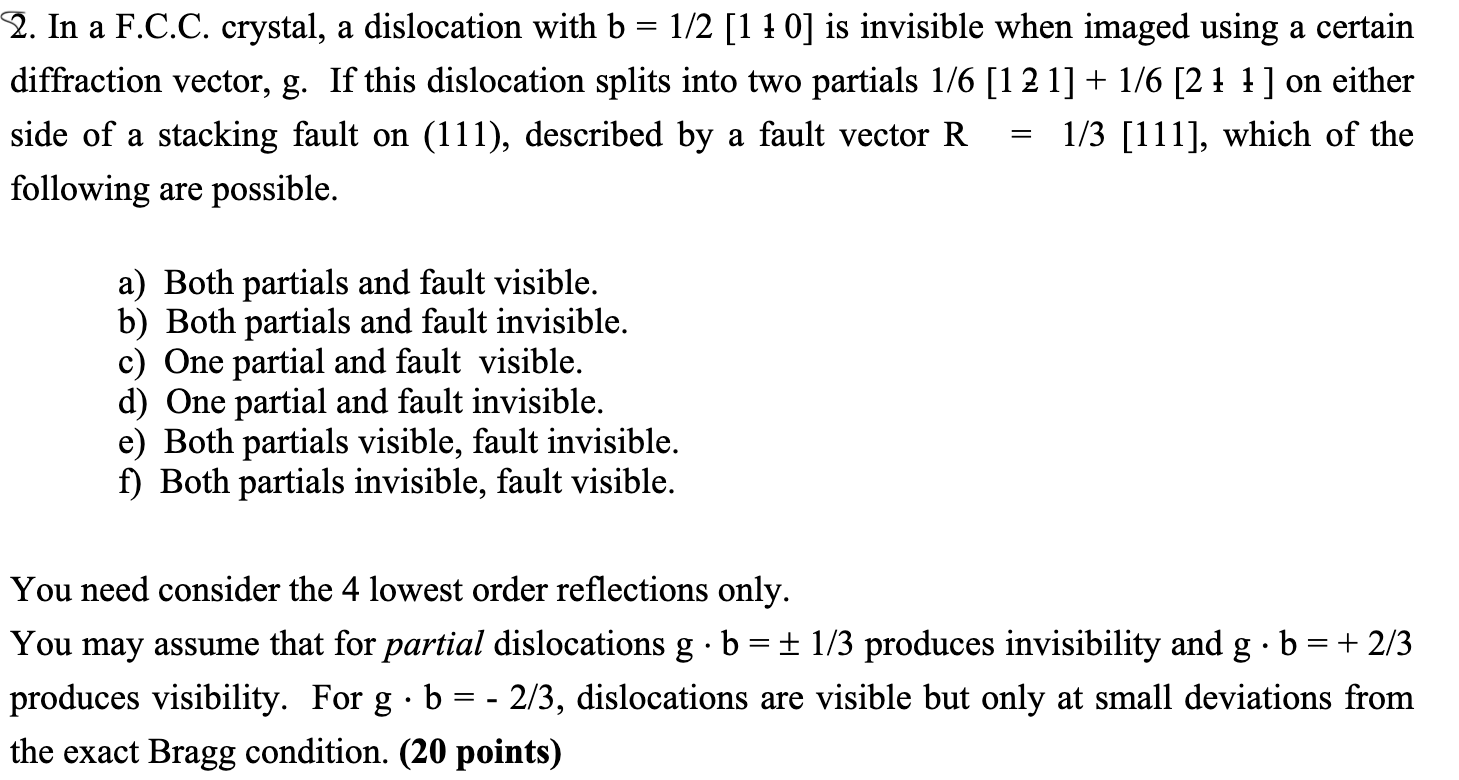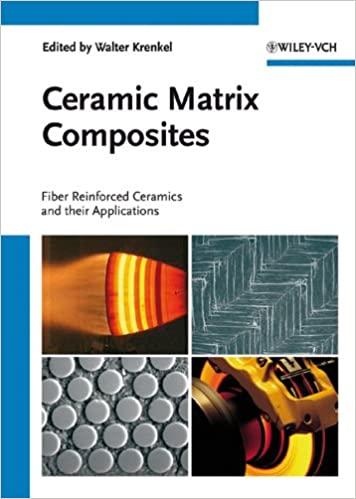Answered step by step
Verified Expert Solution
Question
1 Approved Answer
( Explain step - by - step ) In a F . C . C . crystal, a dislocation with b = 1 2 [
Explain stepby step
In a FCC crystal, a dislocation with is invisible when imaged using a certain
diffraction vector, If this dislocation splits into two partials on either
side of a stacking fault on described by a fault vector which of the
following are possible.
a Both partials and fault visible.
b Both partials and fault invisible.
c One partial and fault visible.
d One partial and fault invisible.
e Both partials visible, fault invisible.
f Both partials invisible, fault visible.
You need consider the lowest order reflections only.
You may assume that for partial dislocations produces invisibility and
produces visibility. For dislocations are visible but only at small deviations from
the exact Bragg condition.

Step by Step Solution
There are 3 Steps involved in it
Step: 1

Get Instant Access to Expert-Tailored Solutions
See step-by-step solutions with expert insights and AI powered tools for academic success
Step: 2

Step: 3

Ace Your Homework with AI
Get the answers you need in no time with our AI-driven, step-by-step assistance
Get Started


